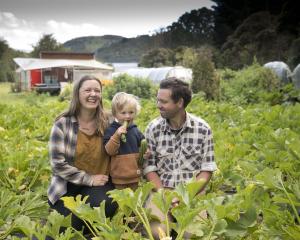
For many North Island maize growers the 2022-23 season has been a grim one and for those with crops completely destroyed it was a financial disaster.
An Arable Industry Marketing Initiative (AIMI) report estimates the maize grain harvest of 164,400 tonnes is down 13% on the previous season despite a 4% increase in harvest hectares. Average crop yields at 9.7 tonnes/ha were down 16%.
The final picture could be worse as about 37% of the crop was still unharvested when the survey was taken in June.
Federated Farmers arable vice-president Maize Jamie Blennerhassett said it has been a bad season for maize growing with Northland, Bay of Plenty, the East Coast and Wairarapa crops only about 50% of long-term averages.
"The persistent rainfall and then the February cyclone meant for some, particularly in the eastern region between Napier and Gisborne, crops have been wiped out," he said.
"Despite replanting two or three times, at the end some had nothing — and much higher costs than usual as well. It’s pretty devastating financially for those people."
Maize silage crops fared better with the estimated crop of just over one million tonnes down 7% and the yield down 9% from a harvest area up 3%.
Arable chairman David Birkett said South Island growers weren’t in a position to prop up the depleted national harvest.
The shortfall was likely to be larger as some of the crop yet to be accounted for was unlikely to be in good condition because of the wet winter, he said.
"Maize crops did very well this year in the South Island and obviously we didn’t get the wet that the North Island got, so maize yields are probably up, but it’s a very, very small portion of the market. I would be guessing the maize grown in the South Island would only be 10%, if that, so 90% of the maize is grown in the North Island and that was the most affected with the weather."
Mr Birkett said maize prices were high last year and the impact of the depleted harvest remained to be seen.
"Clearly, it’s going to end up higher than where it was pre-Covid 19 and the Ukrainian war just on cost alone."
Negotiations had yet to be held for maize silage prices and the dairy payout would be a factor as it was a supplementary feed source for cow herds, he said.
Most maize grain is sold for poultry and pig feed, with some going to dairy. Maize grain can be imported, but it is impractical to import maize silage.
Mr Blennerhassett said domestic prices were strongly linked to the cost of imported grain, and with the recent spike in world grain prices sparked by Russia’s attacks on shipments from the Ukraine, the cost could rise for the "poultry guys".
The poor season has dented confidence, the AIMI report identifying spring sowing intentions for maize grain hectares were down 12% and maize silage down 3%.
A lot of maize was on land leased on a year-to-year roll-over and in some cases the banks would draw a line on finance because of the disastrous season some farmers had suffered, Mr Blennerhassett said.
Mr Birkett said the cash flows of some arable farmers would be "pinched", particularly those who also had yet to get ryegrass seed dressed.
The world ryegrass market was in recovery mode after collapsing at the beginning of the year following a big harvest in the northern hemisphere.
Local ryegrass remained in stores and the coming harvest was expected to be the next challenge for seed dressing plants, he said.
Growers were feeling farm inflation in the form of higher interest rates and fuel and chemical costs, but fertiliser prices had come back, he said.













